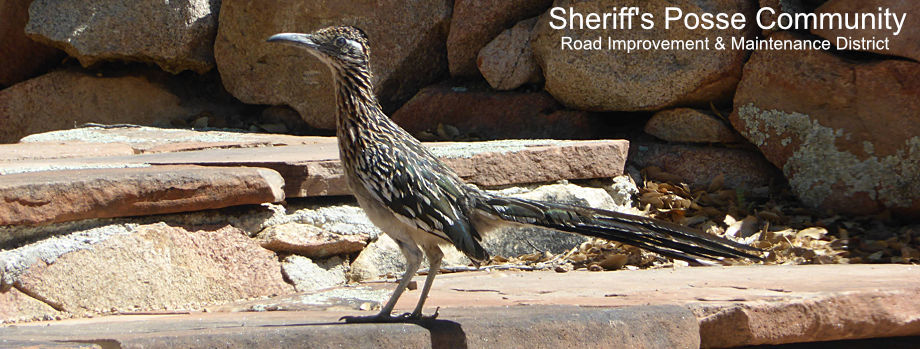
MINUTES OF THE MEETING OF THE
SHERIFF’S POSSE COMMUNITY ROAD IMPROVEMENT AND MAINTENANCE DISTRICT
On November 19, 2015 10:00 A.M.
The residence of Mike O’Connor
2626 W Gentle Breeze Rd, Prescott, AZ 86303
(Agenda #1) The meeting was called to order at 10:10 A.M. Mike O’Connor and Joe Veranth attended.
(Agenda #2) Mike and Joe reviewed the statutory requirements for RIMD records management. The amount of documentation Mike has appears to far exceed that required by law, so it will take quite a bit of work to reduce the collection to a proper level so that it may fit into a two-drawer filing cabinet. Joe’s estimate is that the required documentation should be around 500 pages (mostly everything for the last three years, but only agendas, minutes, budgets, policy and procedure documents, and annual financial reports before that), but Mike has many times that. Joe pointed out that State statute requires records management plans to be “economical and efficient”, not exhaustive or all-inclusive.
Part of that discussion revolved around the need to organize all documents in Mike’s possession into series for disposal. All documents which predate the formation of the RIMD may be destroyed at Mike’s discretion. Later documents must be identified by series and date to comply with our retention schedule and so that the proper paperwork can be filed with the Arizona State Library, Archives and Putlic Records division (ASLAPR). The ASLAPR document destruction form will require at least one line item per series.
For those interested, the retention schedule can be found on our web site under records management. We determined that Mike is empowered to modify the retention schedule as long as notice is provided to the ASLAPR. It may make sense to strike the last item adopted from the state Highway department and replace it with a few items customized to the RIMD.
Aside from records retention and destruction, the key requirements for records management are:
1) Annually provide a report of records destruction to the ASLAPR.
2) Biannually, reconfirm the identity of the Records Officer to the ASLAPR.
3) Every five years, submit a list of essential records in custody to the ASLAPR.
In addition, at least once, Mike may have to inform the ASLAPR of records in his custody that he deems of insufficient administrative, legal, or fiscal value to be included in destruction schedules.
We also discussed the advisability of attempting to obtain documents which Mike currently does not have. This is not required by law, but at Mike’s request Joe will attempt to provide him with a complete set of agendas and minutes, as well as the construction plans.
(Agenda #3) The meeting was adjourned at 11:25 A.M.
